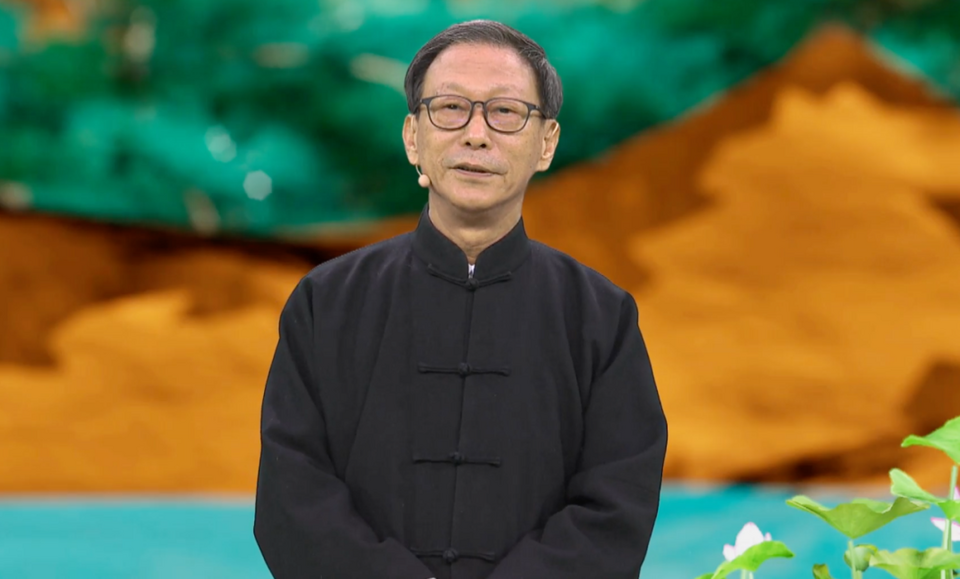Original title: Biography of Masters|Traditionalization of ancient times, new calligraphy and painting with the same origin and wonderful brushwork — Approaching the brush and ink life of Wu Yueshi, a great contemporary freehand brushwork painter
When he was a child, he studied under Qi Baishi’s disciple Wang Zhujiu, and entered into the main vein of traditional freehand brushwork. After decades of concentration, he swayed his brushes freely, and the freehand brushwork of Chinese paintings is full of ink and color. Rooted in tradition, he concentrates on practicing brush and ink, and repeatedly studies the paintings of famous masters of the past dynasties; he continues to learn, opens up new images, promotes the development of contemporary freehand Chinese painting with his distinctive artistic personality and precise appreciation, and becomes an important representative in the field of contemporary freehand Chinese painting figure. He is Wu Yueshi, a researcher at the China National Academy of Painting.
In 1945, Wu Yueshi was born in a scholarly family in Shenyang City, Liaoning Province. At the age of four, he moved to Beijing with his parents. Wu Yueshi’s home is located outside the Heping Gate in Beijing, only a few streets away from Rongbaozhai at that time. As a century-old shop operating the Four Treasures of the Study, calligraphy, painting and seal cutting, Rongbaozhai has formed a deep “love relationship with calligraphy and ink” with many calligraphers and painters, and thus gained the nickname of “Home of Calligraphers and Painters”. Young Wu Yueshi often saw adults coming in and out of Rongbao Zhai with calligraphy and paintings. He likes to paint, and he also goes to Rongbaozhai to see and appreciate paintings like an adult. With the strong support of his family, Wu Yueshi studied under Qi Baishi’s disciple and famous master of traditional Chinese painting Mr. Wang Zhujiu since childhood. In the first ten years of painting, Wu Yueshi received guidance from famous teachers, which broadened his horizons and improved his aesthetic realm at the same time.
Picture: Wu Yueshi, a great contemporary Chinese freehand brushwork painter
In 1967, Wu Yueshi was assigned to work as a farmer in Miaofengshan Commune in Mentougou, a suburb of Beijing. The life of leaving early and returning late, farming and chopping firewood caused calluses on his hands and blood blisters on the soles of his feet. But none of these could extinguish the spark of yearning for calligraphy and painting art in Wu Yueshi’s heart. Unable to find paints for painting, he turned to calligraphy under the concept of the same origin of calligraphy and painting. In the dead of night, he turned on the lamp to read at night and studied various inscriptions. For more than ten years, Wu Yueshi made a lot of notes, sorted out more than 50,000 words of manuscripts, and pursued tenaciously and firmly on the road of painting art.
In 1978, Wu Yueshi was recommended to work in a Beijing painting shop and was in charge of preparing for the opening of the shop. The predecessor of Beijing Painting Store was Wangfujing Sales Department of Beijing Fine Arts Company, which is one of the earliest professional painting stores in my country. At that time, Li Keran, Lu Yanshao, Li Kuchan and other famous artists would go to the store to demonstrate and teach the painting techniques of Chinese painting. During the communication with these masters, Wu Yueshi learned about different pen and ink tastes and gained a lot of knowledge about Chinese painting.
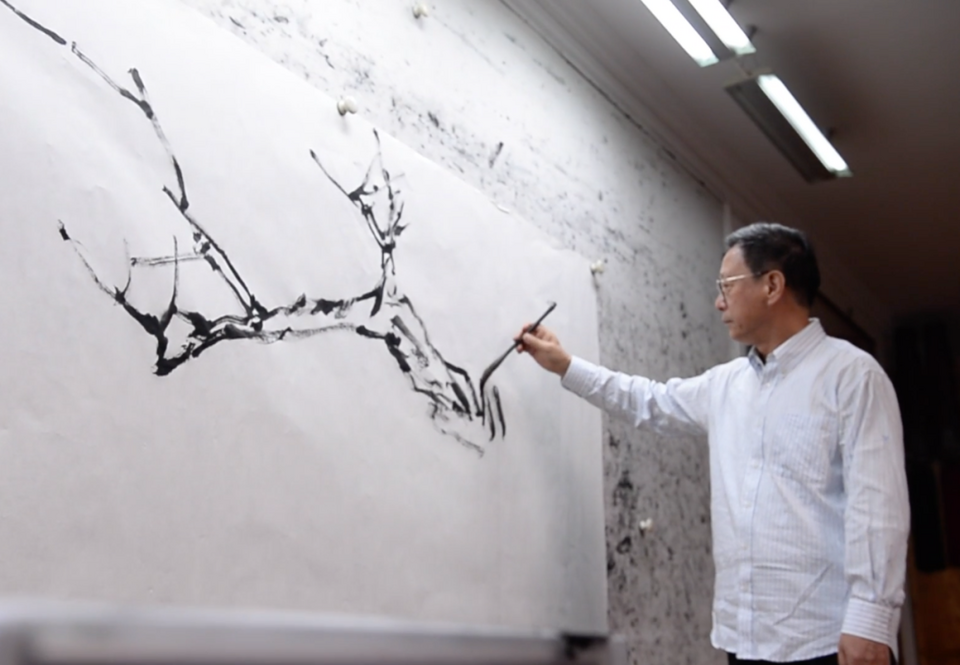
Picture: Painting by Wu Yueshi
In 1980 and 1981, Wu Yueshi held solo exhibitions in Beijing and Nanjing respectively, becoming one of the early painters who held solo exhibitions. In 1986, he went to the other side of the ocean. While feeling the charm of different cultures and arts, he also thought about the uniqueness of Chinese traditional culture. During the more than ten years of living overseas, Wu Yueshi copied a large number of ancient Chinese classic calligraphy and paintings, and realized the fun of the brush and ink of the ancients in painting from every bit of dyeing. In 2000, in order to better create and inherit Chinese paintings, Wu Yueshi returned to this fertile soil that nourished traditional Chinese culture.
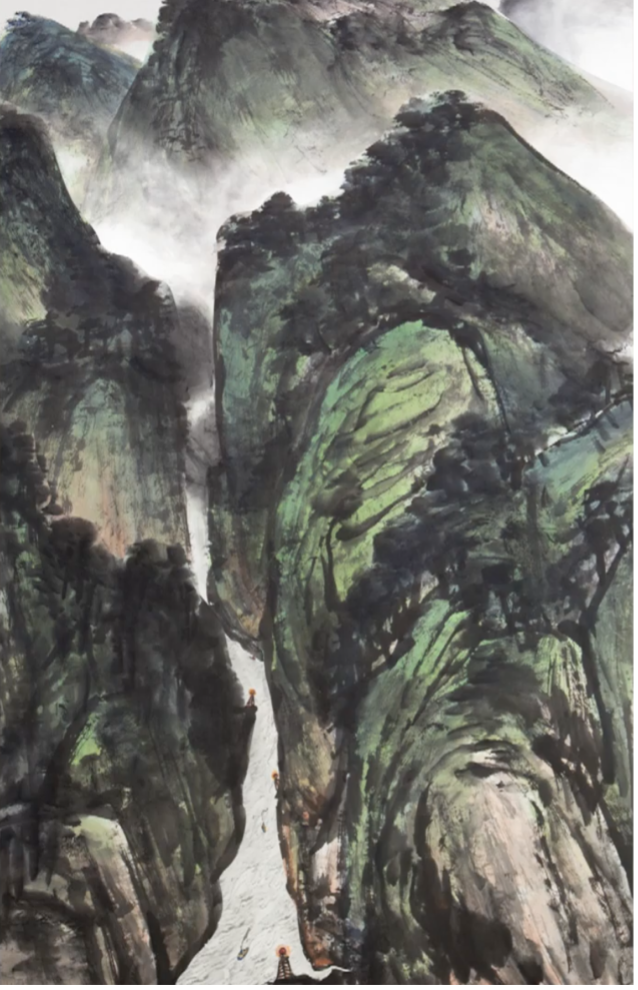
Picture: Wu Yueshi’s work “Kuimen’s Natural Danger” (partial)
For a long time, Wu Yueshi has been rooted in the tradition, turning the past into something new, diligently pursuing the road of exploring traditional freehand brushwork Chinese painting, and not forgetting the cultivation of the spiritual realm while practicing brush and ink. With a calm attitude and method, he has always insisted on inheriting the torch of Chinese painting, and has become a leading figure in contemporary traditional freehand Chinese painting. The lines in his pen are sharp, vigorous, simple and round, and his writing is simple but not empty, complicated but not chaotic. His landscape paintings are simple, ethereal, and elegant; his paintings of flowers and birds are concise, refined, and vivid;
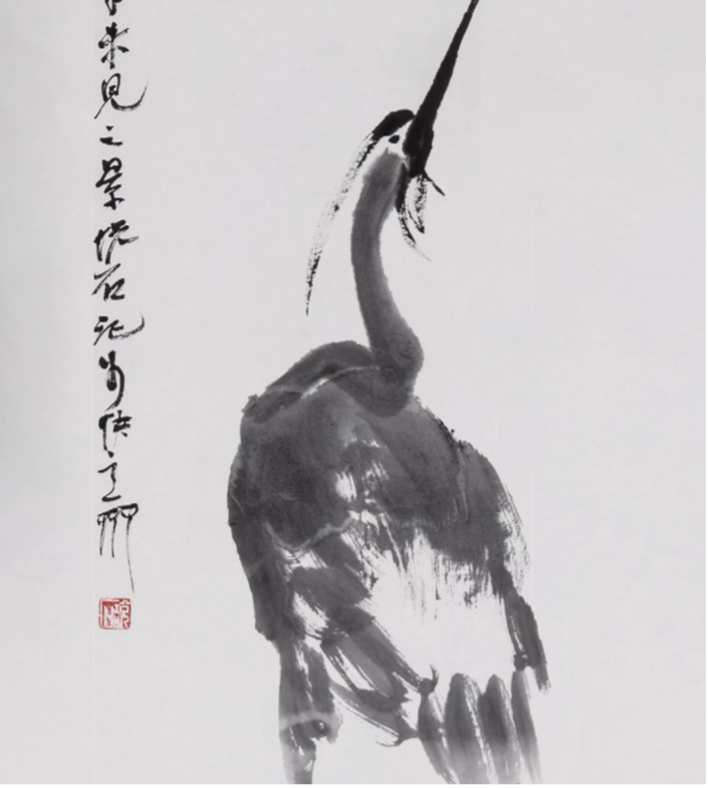
Picture: Wu Yueshi’s work “Egret” (partial)
In order to pass on the traditional freehand Chinese painting, Wu Yueshi taught by word of mouth, answering questions. He pointedly issued a list of classic books related to calligraphy and painting art for students, requiring students to read carefully, broaden their horizons, increase their knowledge, and establish a correct understanding of tradition. At the same time, Wu Yueshi also advocated the use of calligraphy in painting, emphasizing that Chinese painting has been inherited orderly since ancient times. He will choose different inscription exercises for each student according to their different writing styles; he will also ask the students not to write at will when painting, and each stroke must have a method, follow the momentum of the brush, and be honest and neutral.
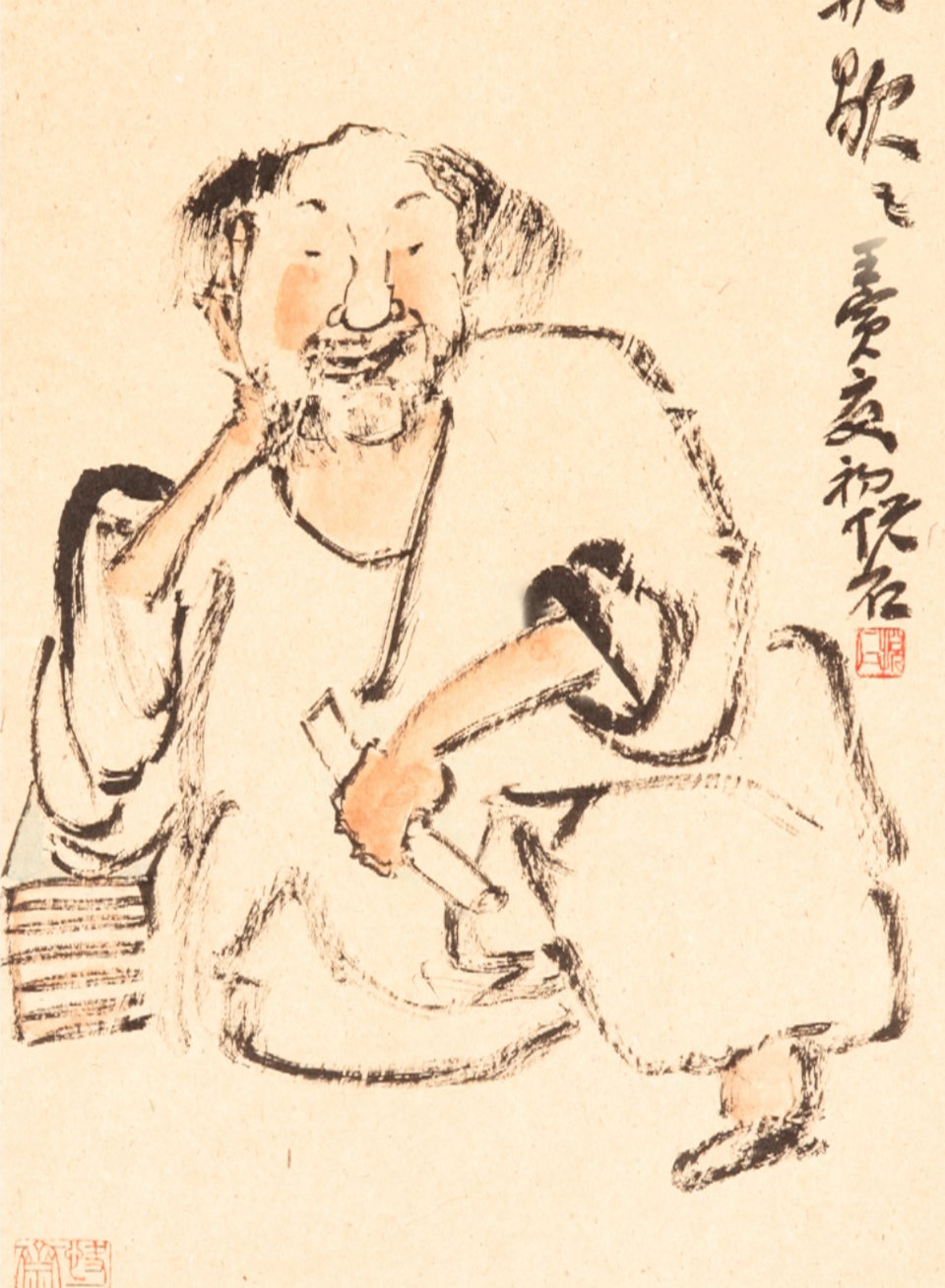
Picture: Wu Yueshi’s work “Take a break when you are tired of reading” (partial)
Calligraphy and painting come from the same source, and what the brush and ink reflect is the mood and personality of the writer. As Mr. Wu Yueshi said: “Brush and ink need tempering. In fact, we are tempered people. It is a process of self-cultivation. After tempering, pen and ink can be mature.”
